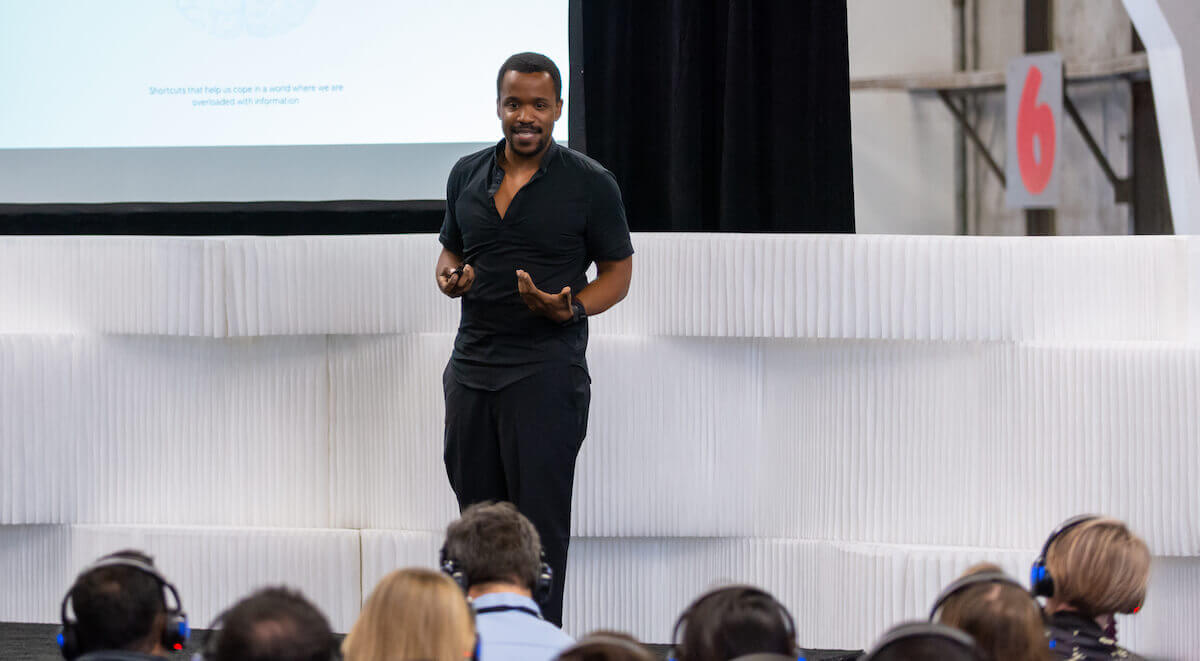I’ve had the pleasure of hearing Benjamin Evans speak twice now—last year at Front UX Conference in Salt Lake City, Utah and again this year at ProductCraft. Each time I hear his story, I’m captivated and compelled to learn more about the work his team is doing. I also find myself inspired to apply inclusive design principles to my team’s work.
At the ProductCraft Conference, Benjamin told the story of how he was discriminated against by an Airbnb host because of the color of his skin. He contacted Airbnb, described his experience, and explained how it went against the company’s core mission of fostering a sense of belonging. Fast forward to today — Benjamin now leads the anti-discrimination design team at Airbnb.
Intention vs. Reality
Benjamin posed this question to the audience of product people at the ProductCraft Conference:
“How did our innovation do the opposite of what we intended?”
Take a minute to think about that one.
Have you seen a human interacting with your product that did exactly the opposite of what you intended? Or maybe they couldn’t even use the product at all due to a disability that wasn’t considered during the product development process. How can we be more intentional and thoughtful as we create experiences for all people?

Benjamin went on to describe how we all have biases and how damaging it can be if we build that bias into the products and services we design. He challenged the audience to think beyond the “average person” and to really consider how we need to be designing for the future. For example, there are a billion people in the world with disabilities. So why are we still ignoring that population? He also made a great point that we are all getting older and possibly experiencing our own disabilities at some point, so our designs should be timeless and universally accessible.

Accessibility isn’t a new idea. In fact, this movement began decades ago. While accessibility is required by law in physical spaces, it’s not yet required in digital products. As product people—designers, product managers, and engineers—it’s our responsibility to create accessible products and services for all.
The Principles of Inclusive Design
Another Lens is the toolkit that Benjamin’s team created that gives designers a simple way to bake inclusive design into products and services from the beginning. The first step they’ve identified is to simply ask questions. These might include:
- Who might disagree with what I’m designing?
- Am I holding onto something that I need to let go of?
- What’s here that I designed for me?
- What’s here that I designed for other people?
Any product design team could ask themselves these simple questions and get started thinking about inclusivity. However, inclusive design requires self-awareness, advocacy, and community as well. According to Benjamin, the three principles of inclusive design are growth, innovation, and belonging. He went on to explain each one in more detail.
1. Growth
Benjamin explained that for a company to grow, its leaders need to “own their lens.” Your “lens” is the way you see the world. One of Airbnb’s main lenses was the English language. Because the company began in the United States, they ended up catering primarily to English speakers. However, this lens became more and more restrictive as the company expanded into the global market. By “owning their lens,” Airbnb’s leadership was able to recognize their own biases and address them.
2. Innovation
In Benjamin’s words, designers need to “champion the other” by thinking beyond the average person. What is the “average,” anyway? To be truly accessible, designers need to create innovative solutions for those who don’t reflect this frequently very narrow definition of the “typical” user.
3. Belonging
According to Benjamin, product designers should constantly ask themselves, “Who are we missing?” Now, this may require changes in a company’s internal culture and a rethinking of processes. A company that makes all users feel seen and accommodated can reap real rewards, both financially and in terms of customer satisfaction.
Practicing Inclusivity
How can other companies adopt these principles? As Benjamin said, asking questions is a great place to start. Seek out resources from your users and from other organizations committed to inclusivity. Talk with your product management and engineering teams. Get everyone on board with the effort and make it a priority. Realize that everyone has biases and that being aware of them is the first step to addressing them in a real way.
Additional Reading:
History of Accessible Technology (Stanford)
The History of Accessibility and How You Can Be Part of Its Future (RightHear)

